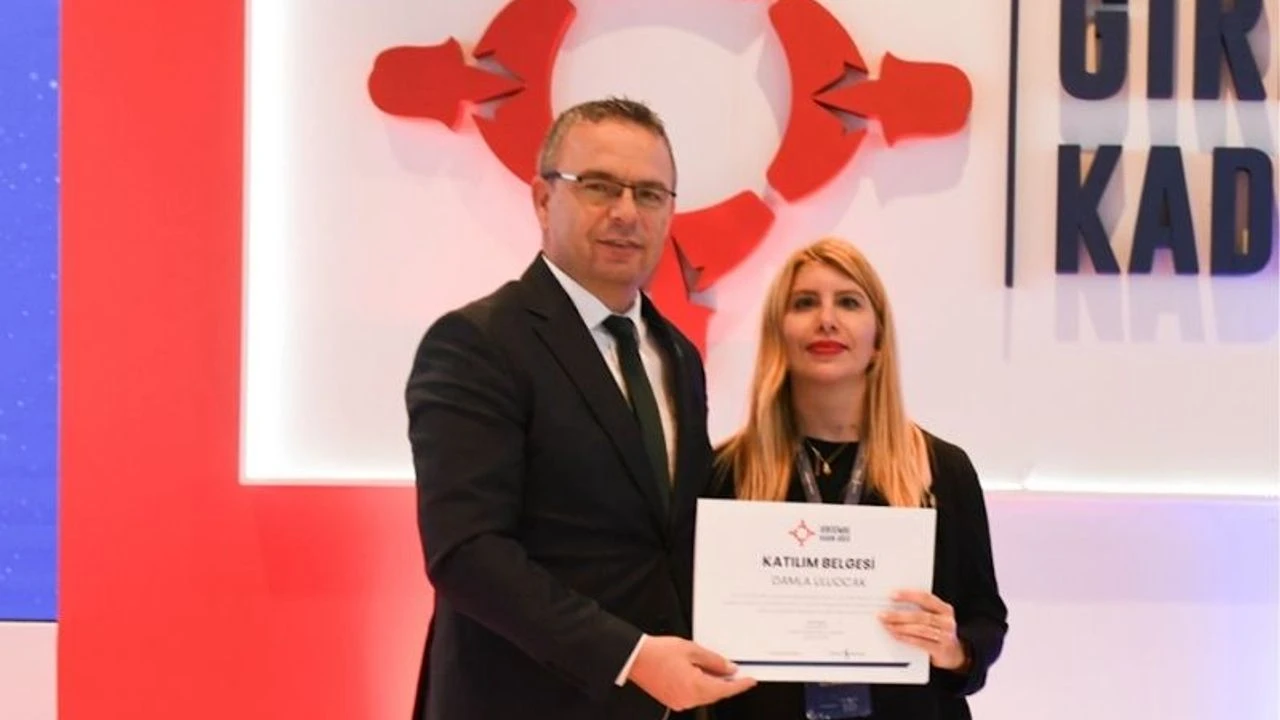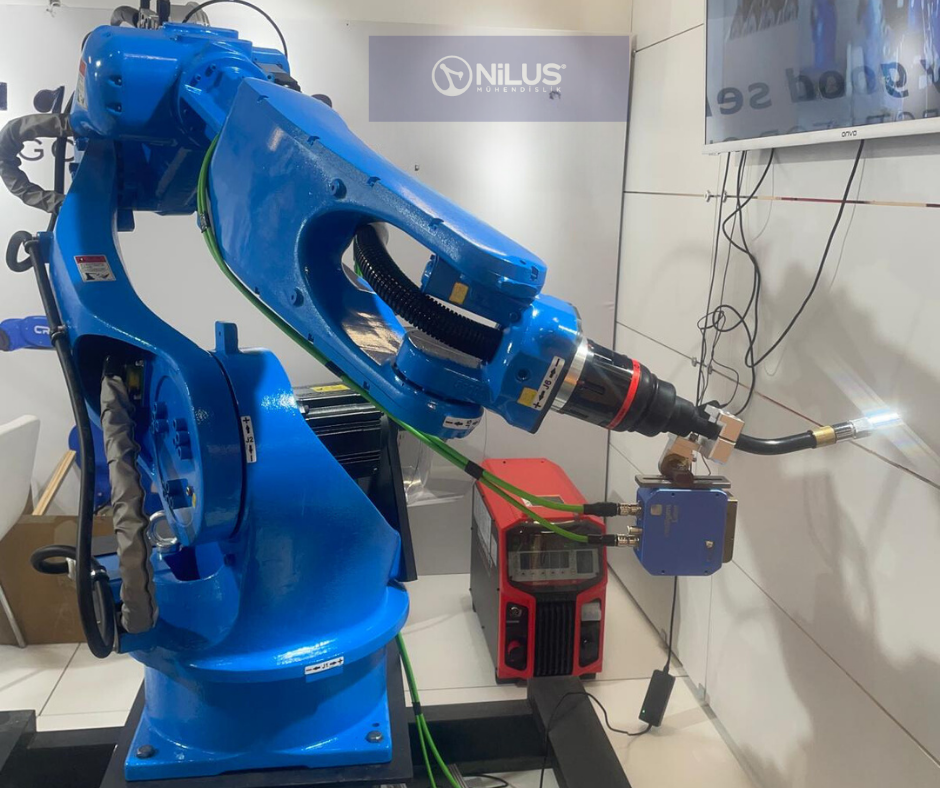Hello Welcome!
With the advancement of technology day by day, radical changes are taking place in production. One of these changes is the widespread use of arc welding robots.
In this blog post, we will examine in detail what arc welding robots are, how they work, their usage areas and advantages.
If you are ready, let’s step into the world of this technology that revolutionizes production together!
What are Arc Welding Robots?
Arc welding robots are industrial robots that perform the arc welding process automatically. These robots have a mechanical structure consisting of arm and joint systems. The welding torch at the end of the arm performs welding by melting metals thanks to the arc created by electric current. Arc welding robots can create the desired welding seams precisely by programming with computerized control systems.
Working Principle of Arc Welding Robots
Arc welding robots work according to a predetermined program. This program includes information such as the geometry of the part to be welded, the type of weld seam and welding parameters. The robot creates the desired weld seam by moving its arm and welding torch according to the information in the program. The heat and smoke generated during the arc welding process is removed from the robot’s arm, ensuring the safety of the working environment.
FEATURES THAT ARC WELDING ROBOT SHOULD HAVE
Robot Features
The travel speeds required for arc welding are relatively low and the weight of the welding gun is not high, so electrically driven robots are generally preferred for arc welding. In the case of heavy welding guns with water cooling systems, hydraulic robots may be preferred.
Articulated robots are preferred for arc welding small parts where the path taken during idle operation is large. This type of robots are capable of performing sensible motion and their design is suitable for immovable parts, while linear robots are preferred in many arc welding applications. Linear robots move more slowly and their trajectory is easier to achieve than articulated robots. To simplify the accurate control of nonlinear weld seams, Interpol asymmetry is required.
Number of Axis
Most robot models have six rotary joints. Arc welding robots usually have five or six axes and some may have seven or eight axes. Two welding robots working simultaneously
The complete robotic workstation can have up to fifteen coordinated axes of motion with external axes. If there are more than six degrees of freedom, a point in space can be approached from several directions. Such flexibility is very important in arc welding applications, where the effect of gravity plays a role in shaping the molten weld bath.
Completeness and Repeatability
The precision with which the robot approaches a point in space is called accuracy. Accuracy is required for robots for which control programs have been developed numerically. Robots that are “taught” the programs do not need to be as accurate as others. Because their movements depend on remembering and repeating the points they have been taught. Repeatability is the ability of a robot to move repeatedly to a point in space. Ark source robots must have repeatability; however, completeness is no longer mandatory when the robot is taught its trajectory.
Process Control
The industrial robot should be capable of controlling the arc welding process. At a minimum, the robot should be able to open and close the shielding gas, start and end the welding process and select programmed welding conditions. Some robots control the welding process by selecting current values. More sophisticated robots can directly control the wire feeder, power supply and alignment and create process conditions as part of the robot program. In addition, welding process variables must be programmed separately from the robot program (1).
Components of Arc Welding Robots
Arc welding robots are systems with a complex structure. Their main components are as follows:
Mechanical Arm:
It is the mechanical arm that acts as the backbone of the robot. It is moved by motors and joints.
Welding Torch:
It is a welding torch that melts metals by creating an arc with electric current.
Control System:
It is the computerized system that controls the robot’s movements and welding parameters.
Programming Software:
It is the software that allows the robot to be programmed.
Sensors:
Sensors that enable the robot to detect its environment and determine its position.
Power Supply:
The source that provides the electrical power necessary for the robot to operate.
Usage Areas of Arc Welding Robots
Arc welding robots are used in many different industries. The most common areas of use are as follows:
Automotive Sector:
Used for welding automobile bodies, chassis and other parts.
Shipping Industry:
Used for welding ship hulls and decks.
Construction Sector:
Used for welding steel constructions of buildings.
Aviation Sector:
Used for welding airplane fuselages and wings.
White Goods Industry:
Used for welding the bodies of refrigerators, washing machines and other white goods.
Agricultural Machinery Sector:
Used in the welding of bodies and parts of agricultural machinery.
Programming Arc Welding Robots
Programming of arc welding robots is carried out by personnel with special skills. In the programming phase, the following is done:
- A 3D model of the part to be welded is created.The type and parameters of the welding seams are determined.
- The robot’s movement path is programmed.
- The program is tested and necessary adjustments are made.
Advantages of Arc Welding Robots
The use of arc welding robots provides many advantages in production. Some of these advantages are as follows:
Increased Productivity:
Arc welding robots can weld much faster and more consistently than manual welding methods. In this way, significant productivity gains can be achieved in production.
Improved Quality:
Arc welding robots can create precise and repeatable weld seams. This can significantly improve product quality.
Reduced Error Rate:
Arc welding robots minimize the risk of human error. This prevents defective products from leaving production.
Increased Safety: Arc welding robots ensure the safety of the working environment by keeping people away from dangerous welding fumes and heat.
Low Labor Cost:
Arc welding robots help reduce labor costs in the long run.
Less On-Site Fatigue:
Manual welding methods can be quite tiring for workers. Arc welding robots, on the other hand, automate this burden, making it less tiring for workers.
Fewer Work Accidents:
Arc welding robots reduce the risk of occupational accidents by automating the dangerous welding process.
Cleaner Working Environment:
Arc welding robots automatically evacuate welding fumes and dust, making the working environment cleaner.
Flexibility:
Arc welding robots can be used with different welding types and materials.
Remote Access:
Arc welding robots can be controlled by remote access. In this way, welding can be performed even in hazardous environments.
Conclusion
Arc welding robots are advanced technological systems that revolutionize production and are used in many sectors. Although the initial investment cost is high, it compensates for this disadvantage with the productivity increase and cost savings it will provide in the long term. The use of arc welding robots increases quality, safety and flexibility in production. In the future, arc welding robots are expected to become more widespread and more advanced.






